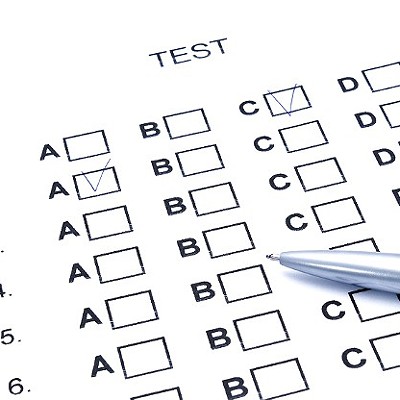She couldn't afford a private school and rejected the idea of home-schooling. After visiting between 10 and 12 charters, she picked the Academy of Math and Science for her kids.
"I liked their general philosophy that a child educationally could go as far as they can," she says. "That means fifth graders can do algebra."
Hartley acknowledges the academy's high school has some disadvantages when compared to typical public schools. "They don't have a broad variety of electives classes, and they don't have the music department I'd like," she says. "Plus, their sports program is small, but that comes with not having a large enrollment."
Miranda Seeley did the opposite with her kids. She took her two daughters out of a charter school and transferred them into the Tucson Unified School District.
When she first moved to Tucson several years ago, Seeley says, she wanted to put her children into a private school, but couldn't afford it. So she found a centrally located charter in the phone book and, after visiting it, enrolled her girls.
She quickly discovered it wasn't the right choice.
"I didn't like it, and they portrayed themselves differently than they were," she says of the school. "It was too open and impersonal. The atmosphere was utter chaos and kind of frightening."
More and more Tucsonans are facing these situations as Arizona continues its charter school experiment. Within two years of the 1992 establishment of the original charter schools in St. Paul, Minn., Arizona lawmakers voted to create a similar program. Today, the state tops the nation, boasting approximately 500 charter school sites with 75,000 K-12 students--accounting for roughly 8 percent of Arizona's 900,000-plus public school children.
But are charter schools a small-business success story--or an out-of-control system that needs more government oversight?
THE ANSWER, OF course, depends on whom you ask. Charter schools are supposed to "provide additional academic choices for parents and pupils," while not being subject "to all of the requirements governing other public schools," according to state law.
Margaret Roush-Meier, executive director of the Flagstaff-based Arizona Charter School Association, believes the advantages of this type of education are numerous.
Charter schools, which are generally smaller than public schools, "are more nurturing, and have a more specific curriculum," she says. "They offer parents and students a choice."
For elementary students, the difference might be between a nearby neighborhood facility with hundreds of pupils and a smaller charter school that requires them to catch a ride every morning.
At the high-school level, some charters focus on intensive college preparatory work in small settings, but many others serve students who otherwise might not even be in school. As a report from the Phoenix-based Goldwater Institute concluded, "particularly at the high school level, (charters) have become havens for students with special problems, returning former dropouts, and others 'referred' to them by (traditional public schools)."
Some school districts even run their own charter-like schools for kids who don't fit into the traditional high school setting.
Demographically, a 1999 comparison showed that students at charter schools differ little from their traditional public school counterparts. They are a slightly higher percentage of native-English speakers and a little more Caucasian, but in general, they're also less educationally gifted and more in need of special assistance.
So how do charter schools measure up academically?
In Tucson, as elsewhere, the academic stats vary depending on the school. While few charters have been around long enough to receive a classification under the Arizona Department of Education's labeling program (See "No Child Left Behind," Aug. 28), their students did have to take the AIMS test last spring.
A comparison between charter and other public schools shows AIMS results were slightly higher at Tucson's traditional public elementary and middle schools than at its charters. The high school results were markedly better at public schools.
Like pupils in those traditional schools, charter students had great difficulty with the math portion on the AIMS test. Most distressing, nine out of 28 Tucson charter high schools reported that none of their 10th-grade pupils passed that part of the exam.
Scores for reading and writing were considerably higher--but not much more encouraging. At a majority of charter high schools, less than 40 percent of their students passed either of these portions of the AIMS test.
But advocates of charter schools see academic advantages. Analysts at the Goldwater Institute said in 2001 that, in general, charter school students scored lower on math and reading tests than their counterparts in public schools, but the rate of improvement for the charters was greater. "For both reading and math, spending three years in a charter school had a greater positive impact on test score growth than did spending three years in a (traditional public school)," according to the study.
The implications for education, the study said, was: "More learning at lower cost." But the conservative institute sidestepped the question of whether the state, already infamous for its low rankings in education spending, should be striving to educate its students even more on the cheap.
ARIZONA TAXPAYERS FUND this academic experiment by providing charters with about $4,900 a year for each student, somewhat less than is paid per pupil in a traditional public school. Unlike regular public schools, charters also can't get additional money for operating costs and capital expenditures through property taxes.
Because of those differences, the analysis by the Goldwater Institute concluded that a charter school spends only two-thirds as much public money as a traditional school does to educate its students.
Although roughly 80 percent of the typical charter school's funding comes from the state, charters do look for sources of money other than the taxpayer. They are eligible for federal funds to help get established, and some obtain revenue from grants and donations.
Prior to opening as individual educational small businesses, each charter must be sponsored and approved by either a local school district, the Arizona Department of Education or the Arizona State Board for Charter Schools. In practice, the state board contracts with more than 70 percent of the charter schools in Arizona.
Before approving an application for a charter school, the board requires extensive information, including a start-up budget that shows how the school will be funded, a business plan, a projected three-year operating budget and a marketing plan, according to Arizona State Board for Charter Schools Executive Director Kristen Jordison.
As small businesses, many charters need to increase their customer base of students to survive, so they often promote themselves through advertising in newspapers and on billboards and city buses.
Jordison says the number of Arizona charter schools has grown by almost 25 percent over the last two years, but new applications are slowing down. "In some areas, competition is a factor in new schools not wanting to open," she says.
In addition to a declining growth rate, some charters shut their doors for financial or other reasons, requiring students to find another school. According to the Arizona Auditor General, "Between June 2000 and April 2003, 13 (state) board-sponsored charter schools have closed--nine because of financial problems. These nine closures displaced over 950 students."
Just last month, a charter school faced closure in Scottsdale. A parent who assumed the school would close told the Arizona Republic, "There's going to be hundreds of sad kids (on) Monday."
The Auditor General's study also cited a number of instances where charters are on shaky financial ground. Two years ago, it looked at 43 schools, and found that 21 of them "were experiencing severe financial difficulties." A year later, the report said, 12 remained in that predicament.
Jordison disputes the basis of that finding. "I don't agree with the formula they used to determine an unstable financial condition," she says.
The Arizona Charter School Association's Roush-Meier says the bottom line is different for small businesses. "The Auditor General report used criteria based on a government mindset, not a business one," she says. "There is a difference between how businesses and the government run."
To stave off financial difficulties for charter schools, the state board provides technical assistance to those it sponsors. It also can assess disciplinary action to address a charter's shaky funding situation. But the board will not publicly identify schools which may have to close due to financial problems, believing it could cause alarm among parents and students.
Unlike a traditional public school with problems, the ultimate responsibility for the operation of each charter school lies with a board of directors. While public schools have elected bodies responsible to the voters, charters are governed by appointed boards whose members are selected by the school's founders, other board members or parents of students.
With the taxpayer and other funds they receive, these directors must pay their employees, rent or buy a facility and cover the rest of the school's expenses. But they don't have the large central administrative staff of a public school district, nor steep building acquisition and maintenance costs, so charters can typically provide smaller class sizes than traditional schools. Cynthia Bower, at the BASIS school in Tucson says, "almost all the money goes into instruction, not into a building or administration."
AS PRESIDENT OF THE Tucson Education Association, the labor organization which represents local teachers, Paul Karlowicz has a different perspective about why charters can afford to provide smaller class sizes.
"They pay their teachers much less," he says succinctly, an assertion charter school administrators dispute.
There are other variations between charters and traditional public schools. Charters don't have to provide student transportation, and they don't have to offer programs for gifted children.
Karlowicz says these and other differences between charters and traditional schools can put the latter at a disadvantage.
"There are a number of rules that apply to traditional schools that are waived for charters, and one is certification of teachers," says Karlowicz. Public schools must employ teachers who have been certified, while a charter only has to hire people who are highly qualified in their area of expertise.
"Some people think there is not a level playing field by the federal and state governments between charters and traditional public schools, and that angers them," Karlowicz says.
Calvin Baker, superintendent of the Vail School District, sees some benefits to charter schools, such as promoting educational experimentation and expanding parental choice.
The Vail District sponsors two charters. The 6-year-old, 200-student Vail High, located in the University of Arizona's Science and Technology Park on South Rita Road, offers pupils a smaller atmosphere, greater use of technology for instruction and a working relationship with businesses in the Tech Park. At the other end of the educational spectrum, the K-6 Civano Community School is intended to be a return to the one-room schoolhouse concept of an earlier era. Baker says it's a parent-friendly, cross-aged curriculum institution.
Vail's charters have had an impact on the district's planning, according to Baker. Vail officials decided to build a third high school that would be someplace between its small charter and its other high school, which will eventually have an enrollment of 1,700.
"The same thing doesn't work for every student, and big schools try to be all things to all people," Baker says. "You can't do that at every school, and this way parents and students can decide which is best for them."
But Baker cautions that taxpayers may not see savings from charter schools.
"I don't see a huge financial advantage one way or the other, because charters don't do some things, like play football or have marching bands," he says.
Many charter schools also don't offer any on-site recreational opportunities to their students. While there is a local charter athletic league, the traditional public school buildings which serve as after-hours community centers and the outdoor facilities such as basketball and tennis courts, along with large play areas, are not provided by charters.
Baker also has major concerns about oversight. "There is a lack of accountability, and the state can't supervise all those schools," he says.
A few charters have run into serious problems. One was a religious-based school using taxpayer money to operate, while another balanced its books by showing revenue from a federal grant for which it was not eligible.
One Tucson charter school director pled guilty in 2000 to falsifying reports and spending school dollars on purchases at Victoria's Secret, Dillard's and other department stores, as well as gym memberships, golf vacations and car rentals, according to the Attorney General's Office.
A RECENT REPORT FROM the state Auditor General found that annual site visits were conducted at only 40 and 87 charter schools during 2001 and 2002, and recommended greater monitoring. While it maintained that its oversight work was sufficient, the Arizona State Board for Charter Schools did agree to make some changes in its policies to address this concern.
Baker believes parents might have a hard time complaining if there is a problem at a charter school. "Their (governing) boards are unelected and unknown," says Baker, who thinks sponsorship of charters should be limited only to local school districts. "That way, the voters can look to their local (elected) school board for answers."
Because that proposal would dramatically reduce the number of charter schools, officials at the Arizona Charter School Association are adamantly opposed to it and to other suggestions to increase governmental oversight of charter schools.
"They are already held accountable and don't need any more regulations," Roush-Meier says. "The scrutiny is higher than at a traditional public school, and the state does a great job of oversight. Accountability is there, but some people just want more rules and regulations, which would mean we'd end up with no charter schools."
Karlowicz says there are elements to charter schools that even an official from a teacher's union can appreciate. "They have forced the Tucson Unified School District to look at things like (local) school councils, and not be as bureaucratic as in the past," he states.
But Karlowicz believes the jury is still out on Arizona's charter school movement
"I think there are valuable things a traditional school can learn from how charter's operate, but they do take students, and funding, away from traditional public schools," he says.










